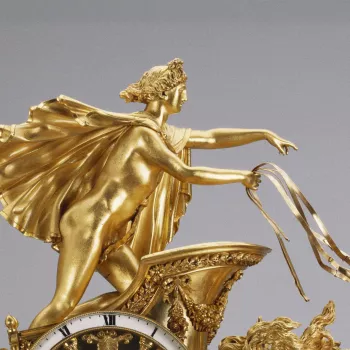Pair of peacock vases and covers mounted as pots-pourris pot-pourri vases: 1700-50, mounts: 1750-1800
Porcelain with moulded decoration and turquoise glaze and gilt bronze | 26 x 17 x 24.5 cm (whole object) | RCIN 477
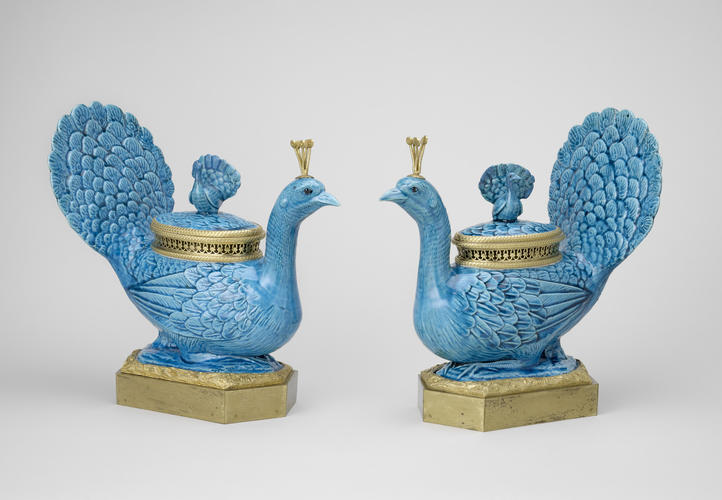
China
Master: Pair of peacock vases and covers mounted as pots-pourris pot-pourri vases: 1700-50, mounts: 1750-1800
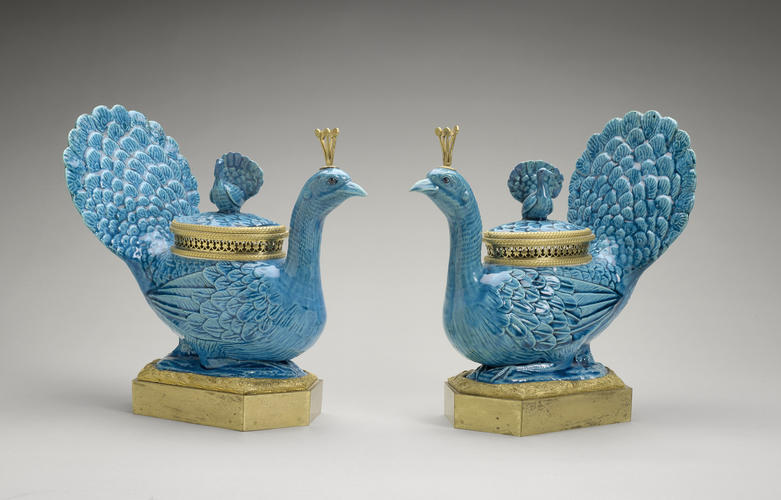
China
Master: Pair of peacock vases and covers mounted as pots-pourris pot-pourri vases: 1700-50, mounts: 1750-1800
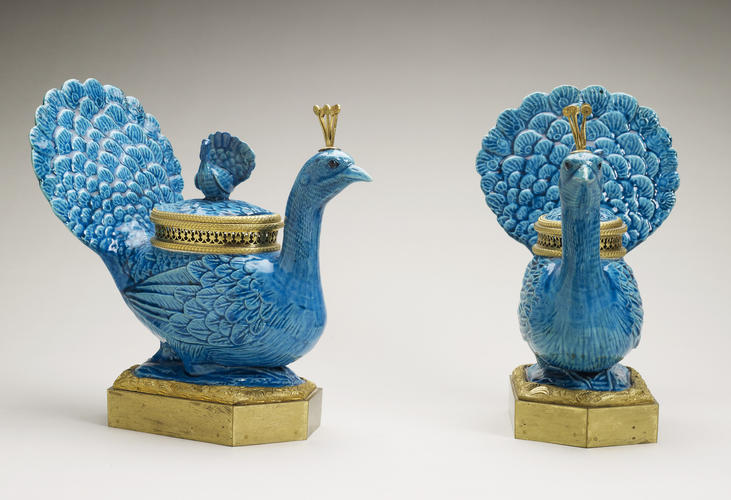
China
Master: Pair of peacock vases and covers mounted as pots-pourris pot-pourri vases: 1700-50, mounts: 1750-1800



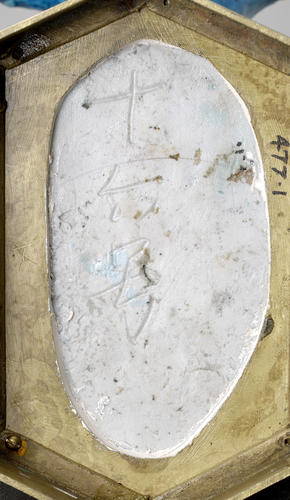
-
A pair of turquoise porcelain pot-pourri vases in the form of peacocks. The bird is hollow and sits with legs folded on a rockwork base, with boldly marked feathers on the flanks and incised plumage on the upright neck, the eyes picked out in dark blue, the beak projecting, a crest of five plumes in gilt bronze set on the head. The raised tail feathers are spread out in a circular fan. The low oval cover on the back has a knob in peacock form. The cover has been fitted with a berried laurel gilt-bronze oval rim and raised on an oval drum, its sides pierced with a patterned arcade, with berried laurel bands above and below. The shaped rockwork porcelain base is set in a conforming plain, rocky, gilt-bronze base moulded with flowers and grasses, now raised on a plain, six-sided, gilt-bronze plinth. Scratched on glazed oval patches on each base are inscriptions; on RCIN 477.1 the inscription reads, shiliu hao (‘number sixteen’), and on RCIN 477.2, ershiqi hao (‘number twenty seven’), suggesting that a series of this model was produced.
Possibly bought for George IV by Benois. On 6 December 1820, Benois submitted a bill including the purchase of ‘5 pieces de Porcelaines Bleu Celeste du Japon de Differents formes dont 2 Bouteilles - 1100 [francs]’ (Royal Archives GEO/MAIN/26440). Peacocks of ancien bleu céleste glaze formed part of some of the greatest French eighteenth-century collections. Jean de Jullienne owned a pair (his sale, 1767, lot 1425) purchased at that sale by the duc d’Aumont.
Turquoise glazes, Islamic in origin, are found in Chinese pottery from the Song period (960–1279) onwards. Used later on porcelain, they were, as a rule, applied to a biscuit fired body and baked at medium temperatures. These wares were especially admired in France in the eighteenth century when the glaze was known as bleu celeste, and were favoured by Queen Marie Antoinette.
Text adapted from Chinese and Japanese Works of Art in the Collection of Her Majesty The Queen, Volume II.
Provenance
Almost certainly George IV. House to the Royal Pavilion, Brighton (Jutsham Dels I.358). Recorded at the Lord Steward’s Apartments, the Royal Pavilion (1829B, p. 90); in March 1847, sent to Buckingham Palace (1829A, p. 33); and in 1921 noted at Marlborough House. Exhibited in Carlton House: The Past Glories of George IV’s Palace, The Queen’s Gallery, London, 1991–2.
-
Creator(s)
(nationality)(metalworker)(nationality)Acquirer(s)
-
Medium and techniques
Porcelain with moulded decoration and turquoise glaze and gilt bronze
Measurements
26 x 17 x 24.5 cm (whole object)
Category
Object type(s)
Other number(s)




